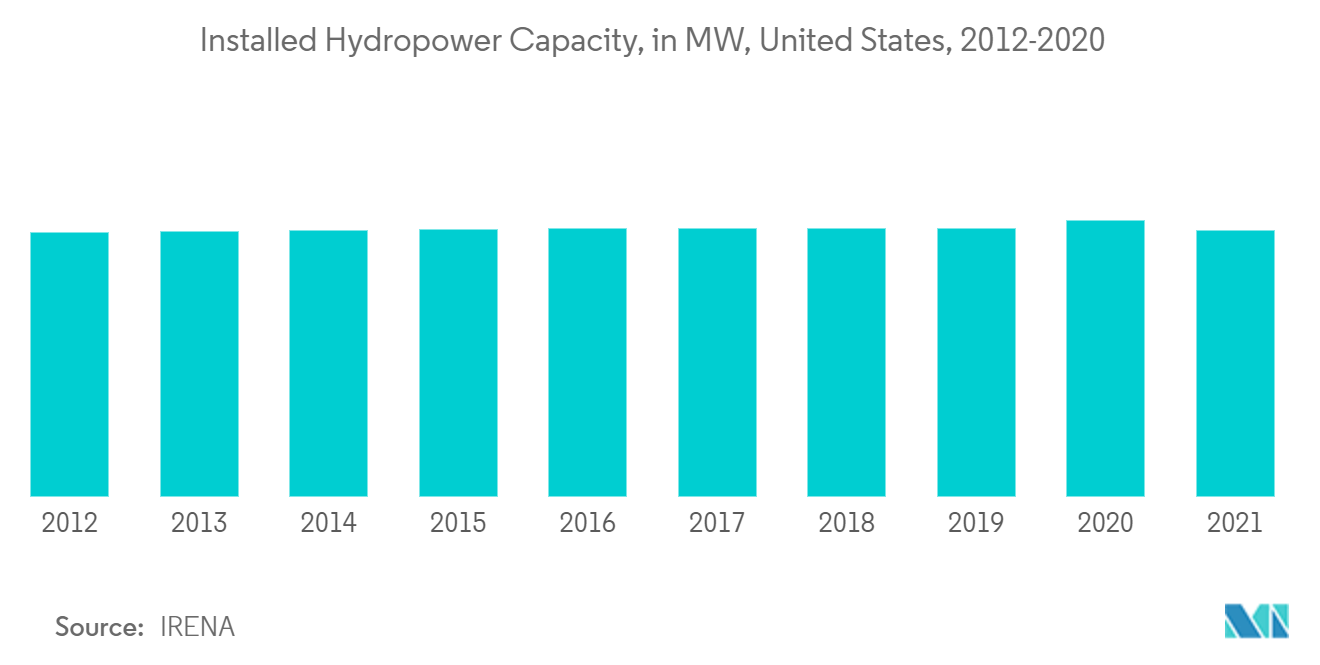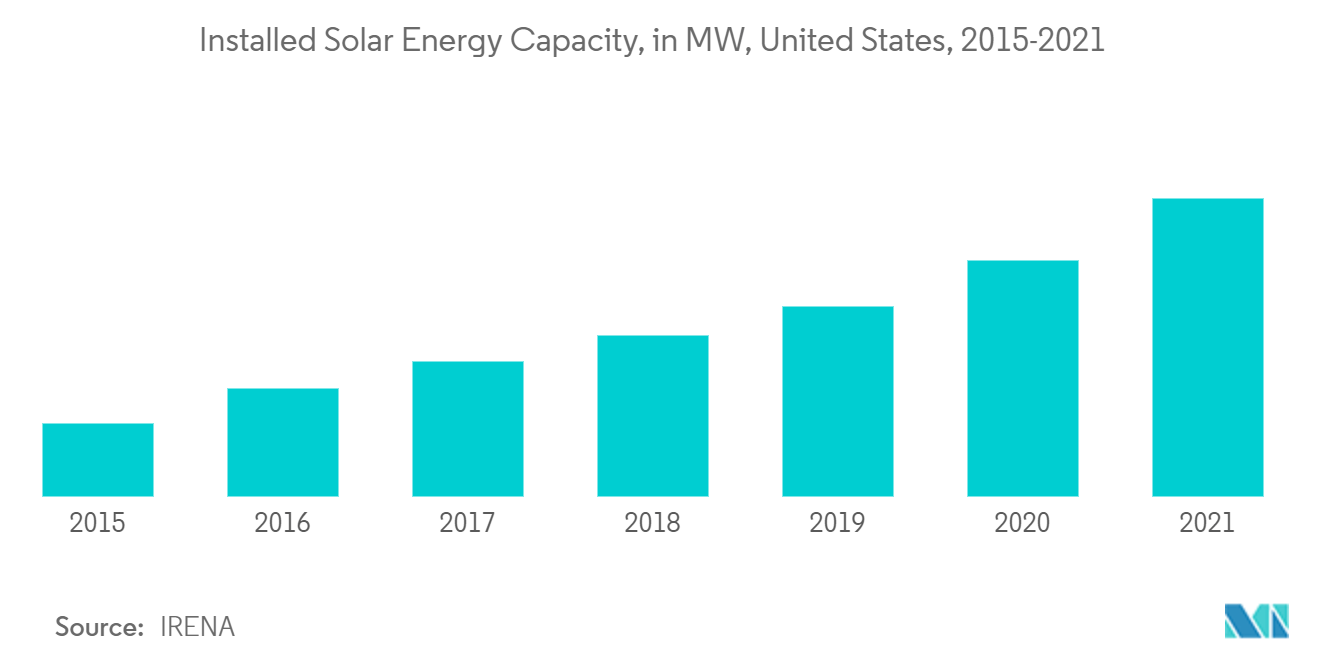Market Trends of United States Hydropower Industry
Large Scale Hydropower to Dominate
- Large-scale hydropower is a form of renewable energy generation derived from flowing water, which is used to drive large water turbines. To generate large amounts of hydroelectricity for cities, lakes, reservoirs, and dams are needed to store and regulate water for later release for power generation, irrigation, and domestic or industrial use. Since large-scale hydropower facilities can easily be turned on and off, hydropower has become more reliable than most other energy sources for meeting peak electricity demands throughout the day.
- Conventional hydroelectric dams pumped storage, and run-of-the-river are the different types of large-scale hydropower plants across the world.
- In January 2020, the United States issued three licenses for 2 GW of new pumped storage projects, and another 22 GW had received preliminary permits. Although demand for storage is increasing, the primary obstacle to the deployment of additional pumped storage hydropower is obtaining long-term financing to cover high up-front capital costs. The Department of Energy Water Power Technologies Office continues to see record funding levels for hydropower research and development, including USD 70 million for marine energy and USD 35 million for conventional hydropower
- Furthermore, the under-construction 400 MW Gordon Butte Pumped Storage Hydro Power plant is expected to go into commercial operations in 2023 which will further drive the market.
- Thus, due to the above-mentioned factors, large-scale hydropower is likely to witness significant growth during the forecast period.

Alternative Renewable Energy Projects to Restrain the Market
- Solar energy is more affordable, accessible, and prevalent in the United States than ever before. This is due to the declining average cost of solar PV panels by nearly 80% in recent years. The solar energy segment is maturing rapidly around the country since solar electricity is now economically competitive with conventional energy sources in most states.
- In 2021, according to the Solar Energy Industries Association of the United States, solar PV installed capacity in the United States reached 96.18 GW 2020, representing an increase of about 26% compared to the previous year's value. The utility solar PV sector has more than 11.2 GW of under-construction projects, putting the market on pace to hit 17.5 GW of annual capacity additions. The residential solar installations exceeded 1 GW and more than 130,000 systems in a single quarter for the first time in the industry's history.
- In March 2021, the United States Department of Energy (DOE) announced ambitious targets to reduce the cost of solar energy by 60% in the next ten years. Additionally, DOE has funded around USD 128 million to lower costs, improve performance, and speed the deployment of solar energy technologies by 2030.
- Furthermore, Wind Energy became the second-largest source of electricity generation in April 2022 since Energy Information Authority began collecting data. Moreover, the Wind Power sector is receiving immense support from the government, due to the America First Policy, which aims to boost domestic energy production.
- In April 2022, Vestas announced that it received an order to supply 33 V162-6.2 MW turbines and 1 V136-3.45 MW turbines to an unnamed project in the United States which will be commissioned in the last quarter of 2023.
- Thus due to the above-mentioned points, alternative renewable energy sources are likely to restrain the hydropower market in the United States during the forecast period.

